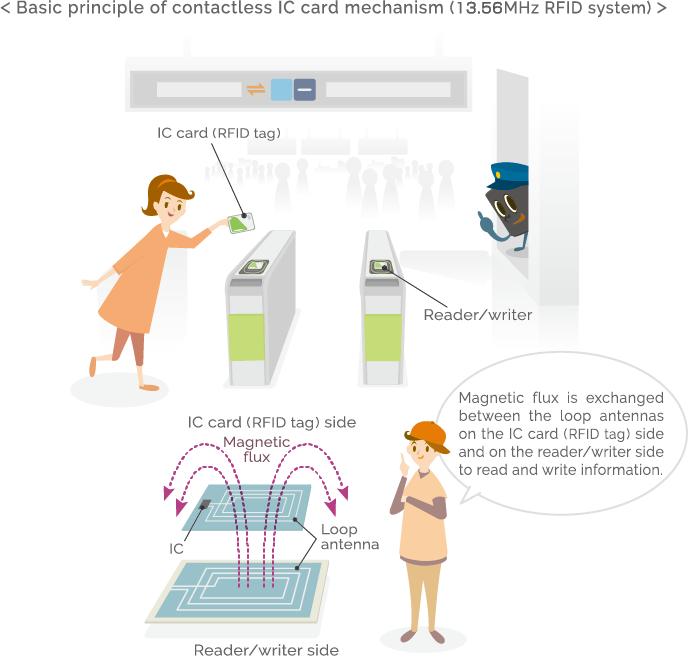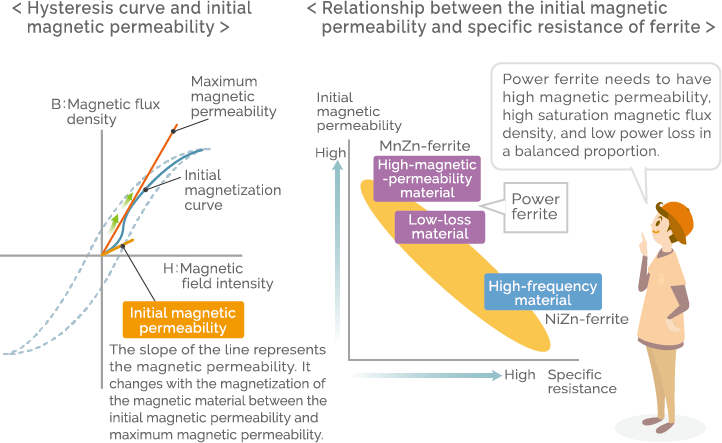Ferrite World
Vol. 7 The performance of ferrite that generates ultrasonic vibration

Pedigree of Japan’s magnetic material science that gave birth to ferrite
Great discoveries or inventions do not come out of nothing; they come to fruition in the middle of the pedigree of science and technology inherited from forerunners. Ferrite, which was invented by Dr. Yogoro Kato and Dr. Takeshi Takei at Tokyo Institute of Technology in 1930, is also a revolutionary material created based on the foundations of magnetic material science that have been developed since the Meiji period.
Magnetic material science was brought to Japan by British engineer James Alfred Ewing, who stayed in Japan from 1878 to 1883 as one of the so-called “hired foreign teachers” at Tokyo University. As described in the previous installment, when an external magnetic field is applied to a magnetic material, a magnetization curve or an S-shaped loop, is drawn. Ewing experimented on and observed this phenomenon with his students and later named it a magnetic “hysteresis” phenomenon. Japanese great physicist Hantaro Nagaoka studied under Ewing, and Kotaro Honda, who invented KS magnet steel, was Nagaoka’s pupil. Takei became recognized for his abilities and excellent experimental skills when researching alloy material at Tohoku University’s Institute for Materials Research, whose first director was Honda, and was invited as assistant professor by Kato at Electrochemistry Department, Tokyo Institute of Technology. Then, the world’s first ferrite magnet (OP magnet) and ferrite (soft ferrite) were created during research on a subject raised by Kato.
Nagaoka was known for “the Saturnian model of the atom,” which served as a pioneering means to reveal atomic structures, and also was a scientist leading the world in magnetic materials research. Nagaoka studied a phenomenon called magnetostriction, in which the size of a magnetic material slightly changes when it is magnetized by applying an external magnetic field. It is also called the “Joule effect” after English physicist James Prescott Joule , known for “Joule’s first law,” first found it with a nickel rod in the middle of the 19th century.
When an AC magnetic field is applied to a magnetic material, it repeatedly expands and contracts due to magnetostriction. Transformers in electrical substations, or transformers installed on power poles sometimes produce a dull whirring sound. This is a phenomenon caused by the magnetostriction of iron cores due to commercial AC currents.
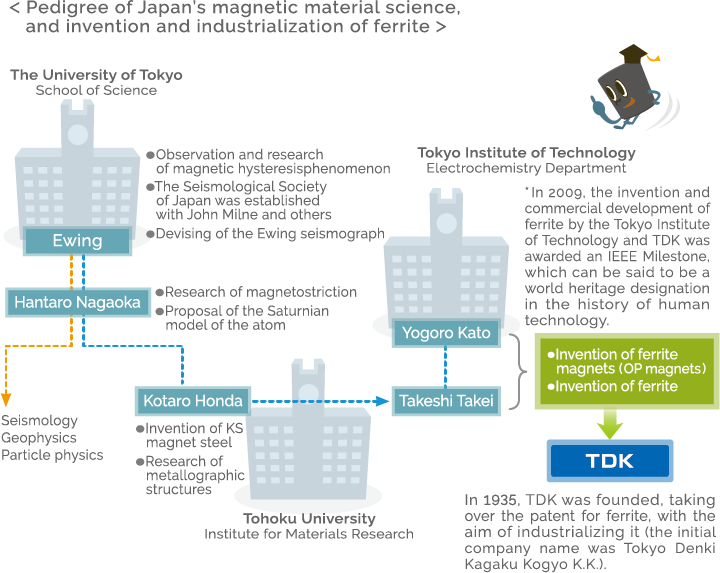
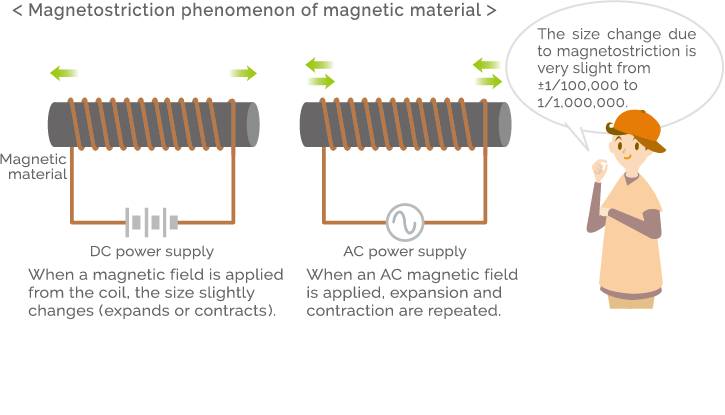
Ferrite magnetostriction vibrators utilized in ultrasonic cleaners
Magnetostriction is associated with the movement of magnetic domains in the magnetic material. Magnetic domains are miniature magnets that constitute a magnetic material, and a crystal grain of ferrite (soft ferrite) has a structure consisting of multiple magnetic domains. The boundaries between magnetic domains are called magnetic domain walls, and when an external magnetic field is applied, magnetic domain walls move and the region occupied by the magnetic domains in the magnetic field direction becomes dominant. When the external magnetic field is further strengthened, the dominant magnetic domains successively absorb other surrounding magnetic domains to turn into a single magnetic domain, and finally become aligned in the magnetic field direction, resulting in magnetic saturation. This is the initial magnetization process of the magnetic material, and during this process, the size of ferrite particles changes in the direction of the external magnetic field (magnetostriction).
The size change due to magnetostriction is slight, and when an AC magnetic field is applied in the middle of the initial magnetization process, the size repeatedly changes and the magnetic material vibrates. A magnetostriction vibrator extracts and uses this vibration externally. A magnetostriction vibrator is a magnetic material wound with a coil, and generates ultrasonic vibration when a high-frequency current is applied to the coil. However, metal materials such as nickel have low electrical resistance, so they cause large energy loss when a high-frequency magnetic field is applied (Joule heat is generated due to eddy current). Meanwhile, ferrite, which is a magnetic ceramic, has large electrical resistance, so it causes only small eddy current loss and is used as a magnetostriction vibrator.
A ferrite magnetostriction vibrator generally has a π (pi) shape. When a high-frequency current is passed through the coil wound around the π-shaped legs with a permanent magnet inserted between the legs as a bias magnetic field, ultrasonic vibration is emitted from the top of the π-shaped vibrator due to magnetostriction.
While there is an ultrasonic vibrator using a piezoceramic that changes its outer shape when a voltage is applied, the ferrite magnetostriction vibrator features the capability to output high-power vibration. Also, ferrite, which consists primarily of oxides, is not corroded by salt water, acid, or alkali, so it is widely utilized in fish detectors, industrial ultrasonic cleaners, etc.
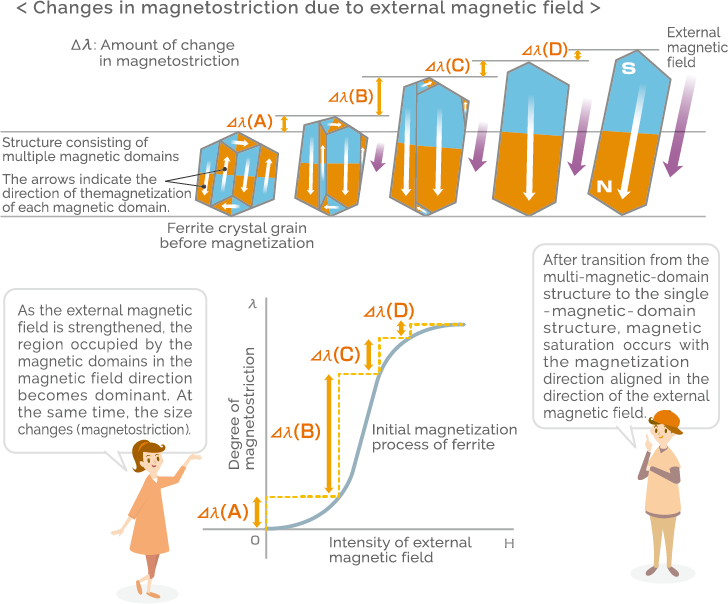

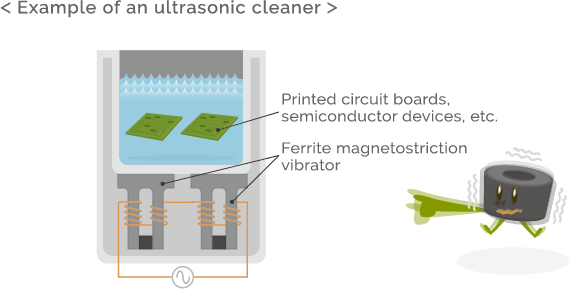
The microstructure of ferrite differs depending on the sintering conditions
Heated iron does not stick to a magnet. A magnetic material becomes a paramagnetic material at a certain temperature, losing the characteristic of sticking to a magnet. This temperature is called Curie temperature (Curie point). This was named after French physicist Pierre Curie, who made many achievements in researching the magnetism of materials (Madame Curie was his wife). A magnetic domain in a magnetic material is in a spontaneously magnetized state in which numerous magnetic electrons are aligned, and at the Curie temperature or higher temperatures, the magnetic electrons are in random directions, and the magnetic material becomes a paramagnetic material, losing spontaneous magnetism and ceasing to stick to a magnet.
When randomly oriented magnetic electrons are aligned, the outer size changes. The quantification of this phenomenon is called a magnetostriction constant. Ferrite magnetostriction vibrators need a ferrite that has a large magnetostriction constant and that is superior in mechanical strength. While there are ferrites with a different composition, nickel ferrite to which a small amount of cobalt ferrite is added is suitable for magnetostriction vibrators.
Ferrite is a magnetic ceramic manufactured by molding and sintering raw material powder. Even if there is no change in its composition, its magnetic properties, mechanical strength, etc. vary depending on the sintering temperature, time, or atmosphere (type and concentration of gas in the firing furnace).
Generally, the size of crystal grains becomes larger at a higher sintering temperature and grain boundary layers, which are the boundaries between crystal grains, become thicker when crystals grow more slowly. If crystal grains become too large or their sizes become uneven, then gaps are formed more easily between crystal grains, and fragility becomes larger against applied stress. Ferrite for magnetostriction vibrators needs to have crystal grains that are not too large and that are of as equal size as possible, and also needs gaps between crystal grains and holes in grain boundaries to be removed. TDK has accumulated sintering know-how over many years and has established an advanced microstructure control technology based on it, thereby providing ferrite magnetostriction vibrators that are superior in vibration properties and mechanical strength.
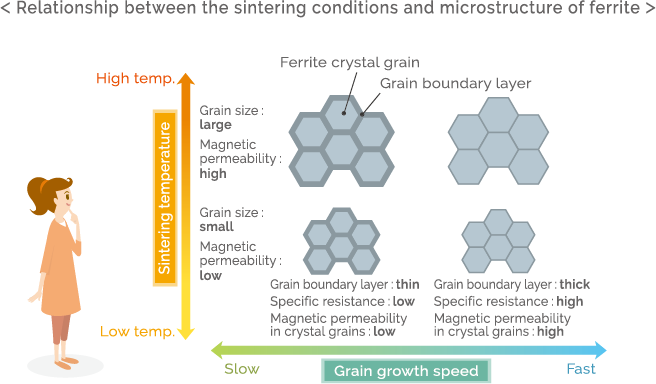
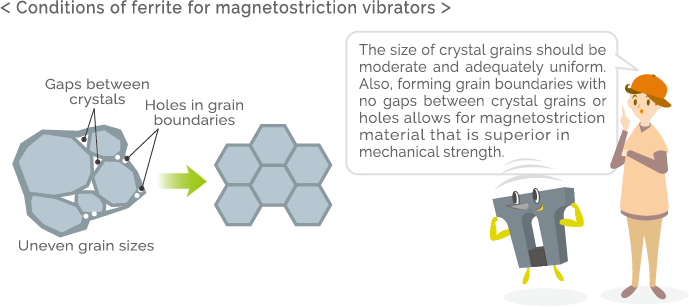
TDK is a comprehensive electronic components manufacturer leading the world in magnetic technology



